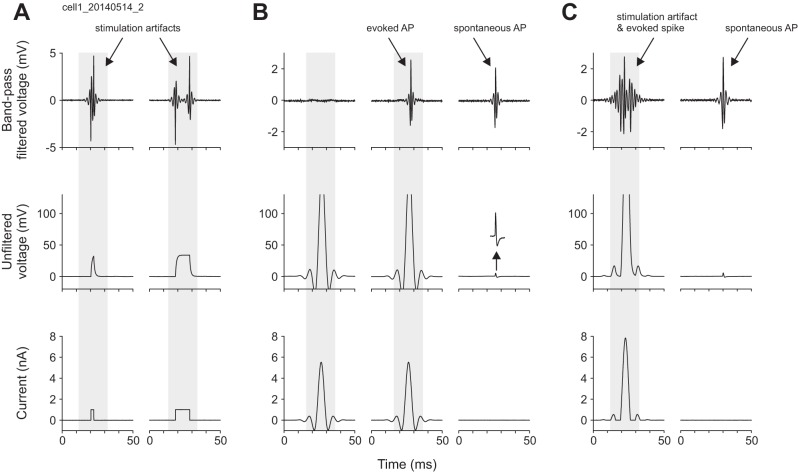Fig. 1.
Kurzpuls nanostimulation enables artifact-free single action potential (AP) induction. A: standard rectangular current pulses evoke recording artifacts large enough to mask simultaneously occurring spikes. Bottom: two example rectangular current pulses (left: 2-ms duration, right: 10-ms duration). Middle: raw voltage signal recorded simultaneously from the same electrode. Top: band-pass filtered voltage signal (500–5,000 Hz) used for AP extraction. Artifacts at stimulus onset and offset prevent spike identification. In this and the following panels, the shaded area serves to indicate stimulus occurrence. B: juxtacellular kurzpuls current injections are capable of eliciting APs while inducing negligible stimulation artifacts. Bottom: two example kurzpulses with current amplitudes close to threshold (t = 6 nA). Left: kurzpuls with current peak of 5.5 nA that failed to evoke an AP, illustrating the absence of a stimulation artifact (top); middle, kurzpuls with the same amplitude that triggered an AP. Right: spontaneous AP to demonstrate the close similarity of evoked and spontaneous spike waveforms (top). Inset is shown at the same time scale but with 8-fold magnified y-axis. C: negative deflections flanking kurzpulses are not necessary to elicit spiking, but their exclusion yields stimulation artifacts. Bottom: rectified kurzpulses with negative current values clipped to 0 (delivered at 8 nA). Data in A–C are from the same neuron. Data in B were obtained during threshold determination for this unit.

